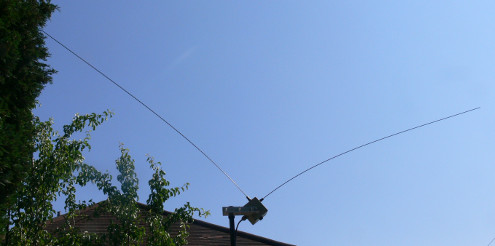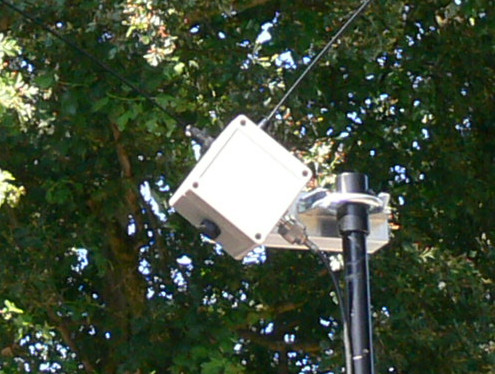
HF Active Vee Antenna

HF Active Vee Antenna

Cross Country Wireless have recently revised their HF Active Vee Antenna with a frequency range of 10 kHz to 70 MHz.
Recently we were asked by one of our customers to design an active antenna to replace some venerable Cold War era Rohde and Schwartz HF antennas used for HF radio monitoring. The original R&S antenna used an upright vee configuration that allowed ground wave vertically polarised, HF sky wave and NVIS signals to be monitored on one antenna. Our new active antenna uses the same configuration to give similar results in a smaller antenna.
Computer modeling and on-air testing shows that the antenna is elliptically polarised with a vertical component 6 dB below the horizontal one.
Our antenna is a 90 degree upright vee active antenna with a built-in low noise RF amplifier. The revised version of the antenna uses coaxial cable between the base and head unit to feed DC power and transfer RF signals. N type female connectors are used on the head and base units. The antenna uses isolation transformers to isolate the antenna elements from extraneous RF noise picked up by the feeder cable or from the electrical supply to the base unit.
The antenna power requirements are 10 to 16V at 15mA. (Note early versions used 150mA)
Like our other active antennas the antenna has RF over-power protection on the antenna element and the RF output on the base unit.

The antenna amplifier uses a balanced high linearity low noise amplifier.
A BNC female connector is used for the RF output port on the base unit.
The antenna comes with a revised mounting bracket and a 52mm clamp for mounting on 50mm or 2" scaffold poles.
The HF Active Vee Antenna FAQs can be downloaded here .
The HF Active Antenna Operating Manual can be downloaded here .
A link to a web page with detailed antenna plots and the NEC file for the HF Active Vee Antenna is here .
If you require more detailed information please contact us by email at info@crosscountrywireless.net